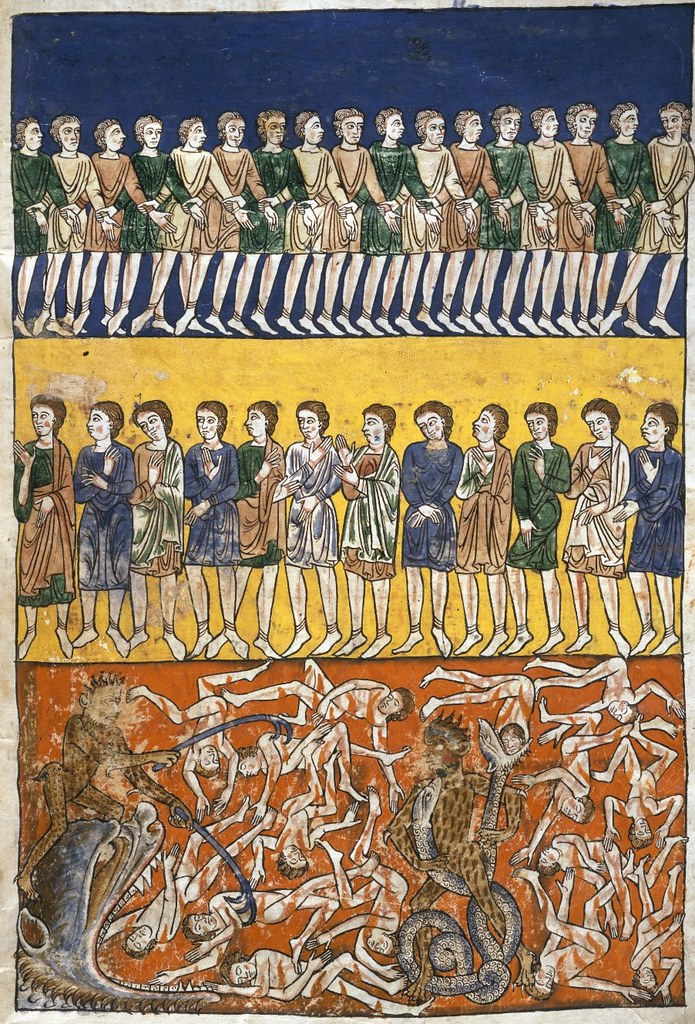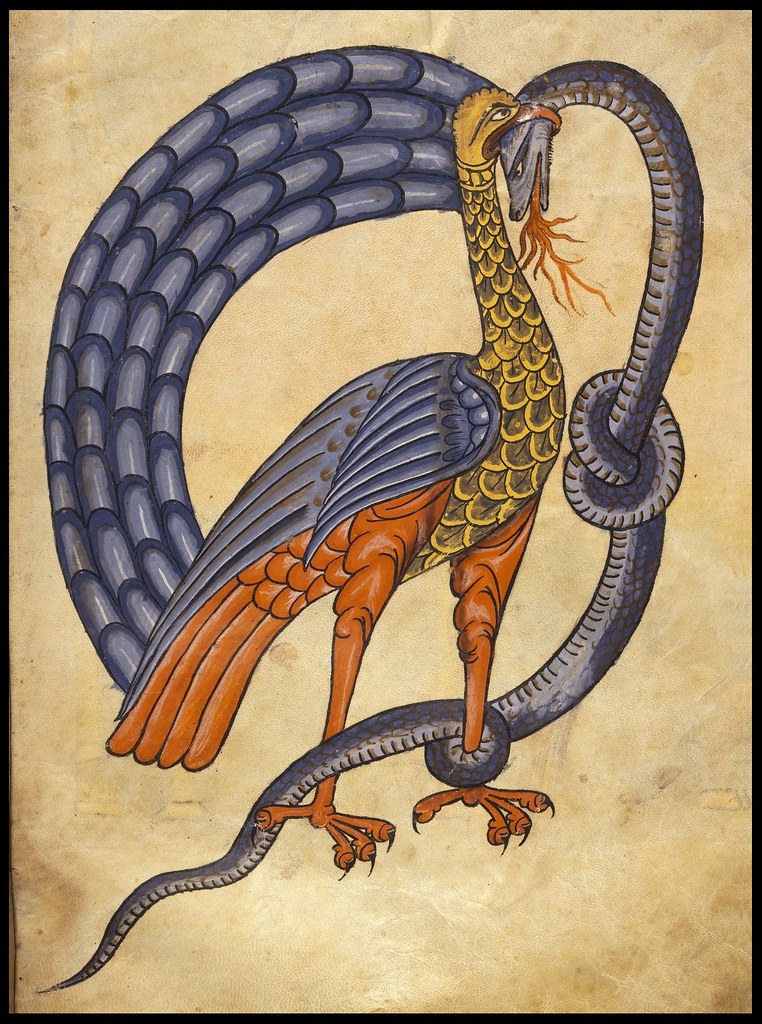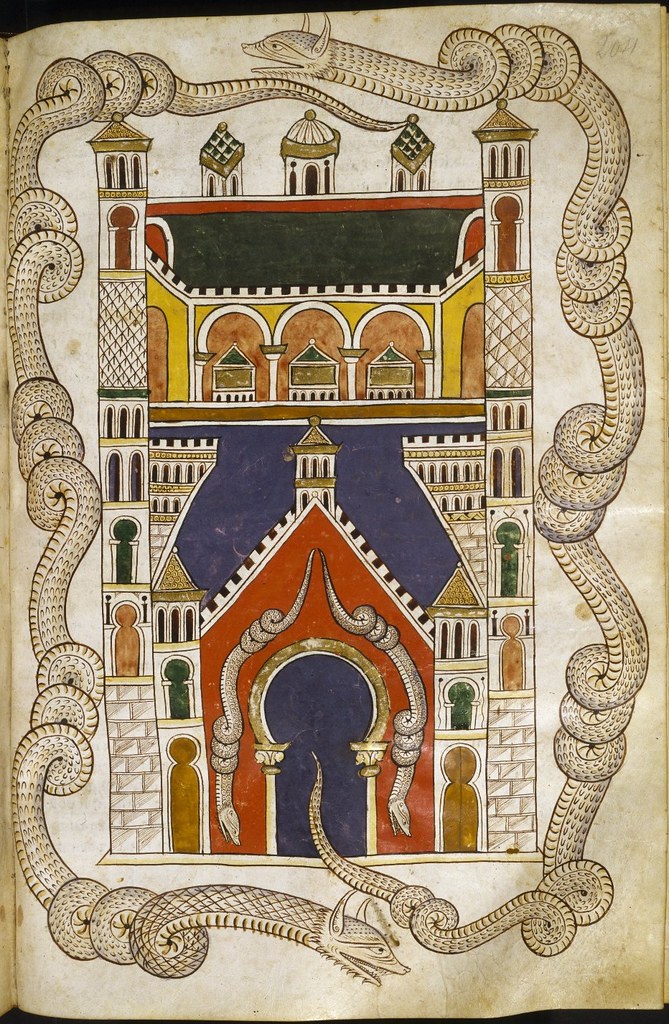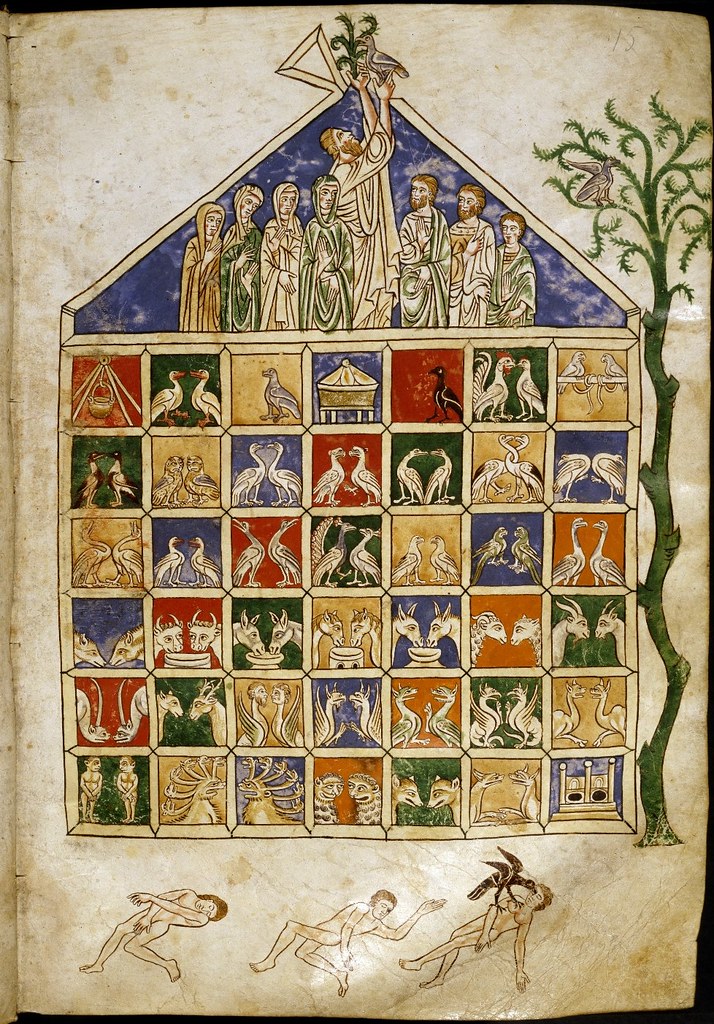 |
|
Many Beatus manuscripts
begin with a full-page Cross of Oviedo,
so named after Greek-shaped crosses in the treasury of Oviedo Cathedral that
were thought to imitate the cross carried by Pelayo of Asturias in his 722
victory over the Moors at the battle of Covadonga. (Pelayo's battle was
regarded as the beginning of the Christian Reconquista.)
|
The term "Beatus"
identifies a particular medieval manuscript, of Spanish origin, that contains a collection of textual comments on
the apocalypse of Saint John. The aim of the author, Beato of Liébana, was that
of indoctrinating and educating the clergy, although, in some cases the
manuscript was also used for certain rites and rituals.
The first version of the
commentary was successively edited by the very hand of Beatus, as well as by
later authors, each of whom contributed in creating different versions. There are 27 illuminated manuscripts that
have been identified as having these characteristics and are, therefore, named
"Beatus of Liébana" and are conserved in various libraries around the
world.
 |
| Lower part represents hell mouth (Boca del infierno) |
 |
| Destruction of Babylon: the splendid city of Babylon — engulfed in flames — is a symbol of Satan and of all evil. |
"And
I saw another angel descending from heaven, saying: "Fallen, fallen is
Babylon the great. And she has become the habitation of demons, and the
keepsake of every unclean spirit, and the possession of every unclean and
hateful flying thing." For this reason her afflictions shall arrive in one
day: death and grief and famine. And she shall be burned with fire. And the
kings of the earth, who have fornicated with her and lived in luxury, shall
weep and mourn for themselves over her, when they see the smoke of her
conflagration, standing far away, out of fear of her torments, saying:
"Woe! Woe! to Babylon, that great and strong city. For in one hour, your
judgement has arrived." And the businessmen of the earth shall weep and
mourn over her, because no one will buy their merchandise anymore."
[Revelations 18:1–11]
 |
| Bird (symbol of Christ) killing serpent (symbol of satan) |
 |
| City of Babylon Surrounded by 2 serpents |
This miniature of Babylon
above functioned as a frontispiece to the Book of Daniel, written between 168 and 165
B.C. in support of Jews persecuted by the Seleucid emperor, Antiochus IV Epiphanes. The book was used as a pattern for later Jewish and Christian
apocalypses, including the present Apocalypse of John, which also told of the
fall of Babylon and the coming of Christ.
 |
| The Noah's Ark |
 |
| Christ Enthroned Over the River of Life |
"He took me up a high
mountain and showed me the river of the water of life, shining like crystal,
proceeding from the throne of God and of the Lamb. In the midst of its main
street, and on both sides of the river, was the Tree of Life, bearing twelve
fruits, offering one for each month, and the leaves are for the health of the
nations. But the throne of God and the Lamb will be in it, and his servants
shall serve him. They shall see his face and his name shall be on their
foreheads. Night shall be no more, and they will need neither lamp nor sun
because the Lord God will illuminate them. And they shall reign forever and
ever." [Revelations 22:1–5]
External links, other info&sources, etc :::
External links, other info&sources, etc :::
- Wikimedia Apocalypse related images.
- Links to Victory Cross, cross of oviedo, Oviedo Cathedral, Pelayo of Asturias and battle of Covadonga provided
- Must see the Flickr sets: Apocalypse Hell One, Two & Three from Tony Harrison.
- Link to Las Huelgas Monastery, Burgos (Spain)
-
MS 644 - the Morgan Beatus - from the 10th century, accessible via the Corsair-Morgan site [MS pdf page descriptions] AND MS 429 - The Las Huelgas Apocalypse - from the 13th century
No comments:
Post a Comment